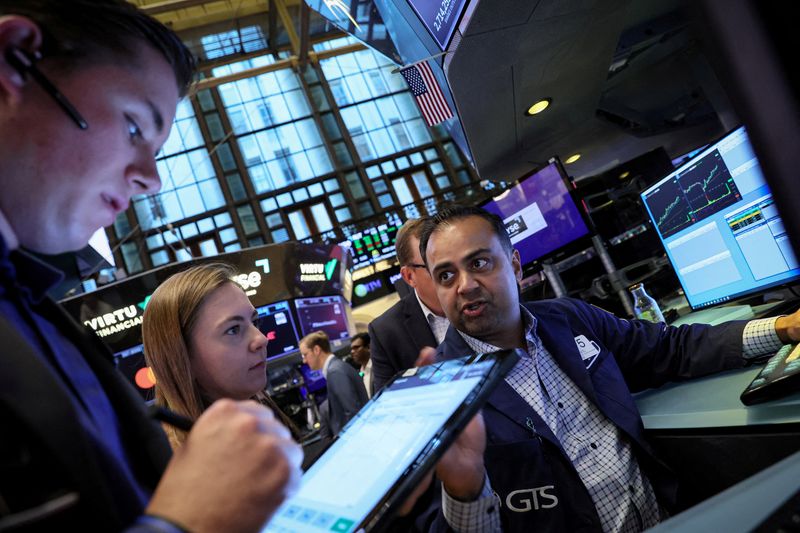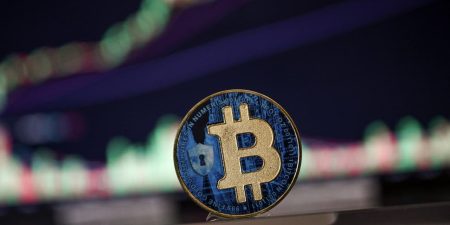Investing.com — The week will be dominated by central bank meetings, with the Federal Reserve and the European Central Bank both poised to deliver rate hikes, while the Bank of Japan stands pat. A rally in U.S. equities markets faces an inflection point and oil looks set for more gains amid concerns over the supply outlook.
- Fed decision day
With the Fed all but certain again at the conclusion of its latest policy setting on Wednesday, investors are focusing their attention on whether this is likely to be the final hike of its tightening cycle.
The Fed paused rate hikes in June after increasing its policy rate by 500 basis points since March 2022, when it kicked off its fastest monetary policy tightening cycle in more than 40 years in a bid to combat spiraling inflation.
Investors have mixed views on the central bank’s longer-term monetary policy outlook.
Analysts at Goldman Sachs said Friday that while they expect this hike to be of the long-running tightening cycle they believe the Fed will ultimately choose to “remain more hawkish than market pricing.”
“The key question is how strongly [Fed] Chair [Jerome] Powell will nod toward the ‘careful pace’ of tightening he advocated in June, which we and others have taken to imply an every-other-meeting approach.”
- ECB meeting
The ECB is widely expected to deliver another 25-basis point rate hike at its upcoming on Thursday, so all eyes are on the central bank’s plans for September, with markets divided on whether there will be another hike or a pause.
in the eurozone has cooled since hitting a peak of 10.6% in December but still remains well above the ECB’s 2% target. The ECB has said inflation was “projected to remain too high for too long” and it still had “more ground to cover”.
After eight consecutive rate rises since July 2022 for a total of 400 basis points, investors and analysts are now hotly debating how many more hikes are needed and how long rates will have to stay high to bring inflation back to target.
ECB President Christine Lagarde is likely to reiterate that future decisions will be based on incoming economic data.
- BOJ decision
Friday’s monetary policy by the BoJ will be keenly anticipated amid ongoing speculation that policymakers could adjust their ultra-loose monetary stance amid elevated price pressures.
Data on Friday showed that Japan’s core inflation stayed above the central bank’s 2% target in June for the 15th straight month but an index stripping away the effect of energy costs slowed, indicating price pressures may have peaked.
While the data heightens the chance the BoJ will upgrade this year’s inflation forecast, it may take pressure off the central bank to soon begin phasing out its massive monetary stimulus, analysts say.
“All expectations are for them to keep yield curve control as is and no changes to rates, but maybe a little upgrade on their inflation outlook,” Edward Moya, senior market analyst at OANDA in New York told Reuters.
However, “the chances that we could get a surprise should remain on the table,” Moya added. “The BOJ is potentially going to be a major market-moving event because time’s running out on the BOJ to really set up a policy shift.”
- Stock market faces test
A rally in U.S. equities markets faces a major test this week with the Fed expected to deliver what may be the final rate hike of its most aggressive monetary policy tightening cycle in decades.
At the start of the year, many investors expected higher interest rates to bring on a recession that would further hurt stocks after 2022’s sharp decline. Instead, the U.S. economy is proving resilient even as the Fed has made progress in its inflation fight and investors are embracing the idea of a ‘soft landing’.
The belief that the Fed is nearing the end of its tightening cycle has boosted stocks in recent weeks.
Aside from the Fed, investors will also be focusing on earnings from some of the massive tech and growth stocks that have led markets higher this year. Among them are Microsoft (NASDAQ:) and Alphabet (NASDAQ:), which report on Tuesday after the market closes.
Both tech behemoths are up sharply year-to-date, driven by optimism that demand for artificial intelligence will bolster future growth.
- Oil prices
Oil prices rose nearly 2% on Friday to notch up a fourth consecutive weekly gain, buoyed by growing evidence of supply shortages in the coming months and rising tensions between Russia and Ukraine that could further hit supplies.
futures rose $1.43, or 1.8%, to settle at $81.07 a barrel, with a weekly gain of about 1.2%. ended $1.42, or 1.9%, higher at $77.07 a barrel, its highest since April 25. WTI gained nearly 2% in the week.
“The oil market is starting to slowly price in a looming supply crunch,” Price Futures Group analyst Phil Flynn told Reuters.
“Global supplies are starting to tighten and that could accelerate dramatically in the coming weeks. Increased war risk could also impact prices,” Flynn said.
–Reuters contributed to this report
Read the full article here














